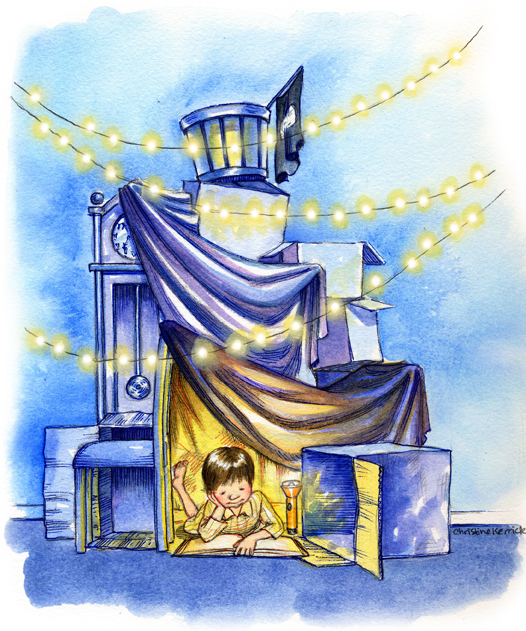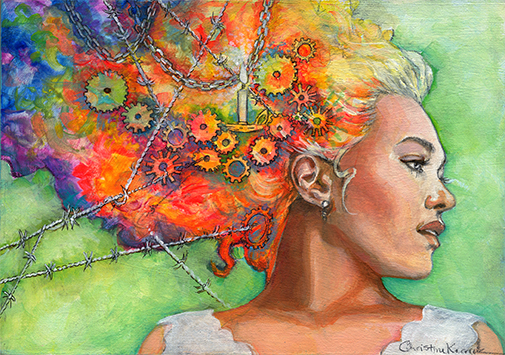
Bailey’s Basement Pirate Ship by Christine Kerrick (acrylic on paper)
And here are the last five, though certainly not all, of the things to consider when hiring an artist:
6. Don’t copy. And don’t expect your illustrator to do so, either. If you see other children’s books you like, you can ask your artist to go with that look. But whether it’s photos you got from the internet, or other artists’ illustrations, make sure they’re yours’ alone. It keeps your book special, too!
7. Are you submitting your manuscript to a publisher? Many writers have approached me about illustrating their entire book, then say it’s for submission to a publisher. You do not have to completely illustrate a book for a publisher. Publishers have their own stable of illustrators. You can—and this is what I suggest to potential clients—have your artist illustrate two or three images (preferably not the cover; that may cost you unnecessarily), pay your artist, and include it in your submission. Some publishers may work with your (professional) illustrator. But the next tip:
8. Don’t have your friend illustrate your book. Or your family member. Or the guy at work who draws on the whiteboard at lunch. Unless any of them are professional illustrators, publishers hate this, and specify not to send such work in. If you’re self-publishing, same rules. You want your book looking amazing, nothing less. Saving money here will ruin your project.
9. Think about merchandising. For self-publishers, include an agreement about using the art for your t-shirts, prints, toys, anything else you may want to sell. Your artist should be ok with letting you use the image to make materials to give out for free to promote the book. But your artist should be included in royalties or some other payment if you decide you want to make merchandise to sell.
10. Where to find artists. You guessed it: Google.
– You can look up artist sites and see their blogs. This is important for knowing if you are a personality fit, too. When you are at the point of contacting artists, ask those clients how the artist was to work with. But save the pricing talk for the artist themselves.
– Art schools can be good places to find artists. Keep in mind, they may not have the experience the pros do, but some good work comes out of these kids!
– Word of mouth is another good resource, especially if you are in a writer’s group
Wherever you find your artist, be sure both of you are comfortable with each other, that all terms are understood, and most importantly, use a contract!

